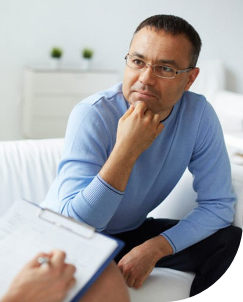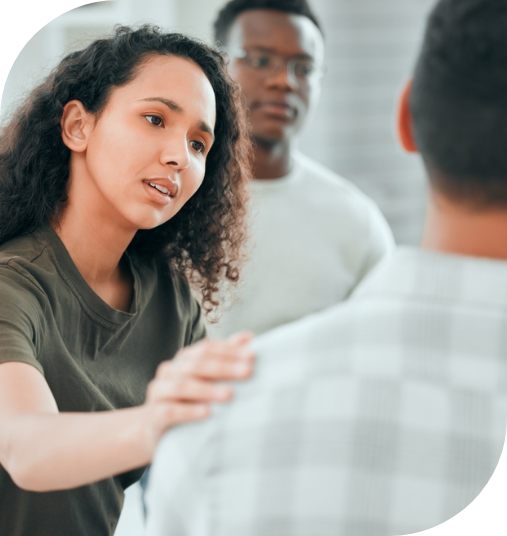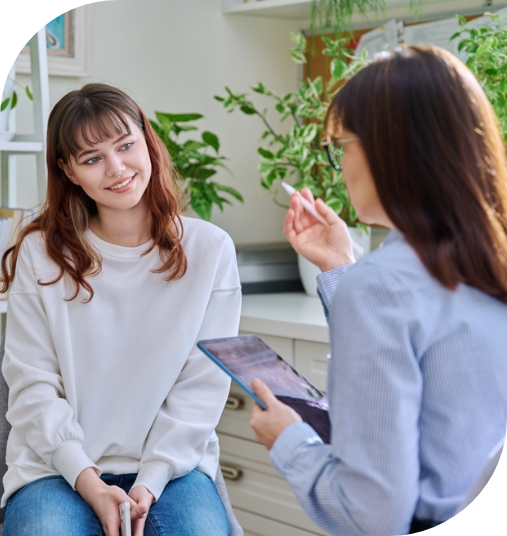Mental Health Group Therapy Activities for Adults
Mental health is super important in our lives. It influences our thoughts, emotions, and actions. It also affects how we handle stress, connect with others, and make important life decisions. Mental health treatment can involve various types of therapy that help people understand their symptoms and find effective ways to manage them. One such therapy is group therapy.
What Is Group Therapy?
Group therapy activities have been a key part of effective mental health treatment for decades. It’s a form of psychotherapy that aims to help people manage mental health conditions or cope with negative experiences and behaviors in a group environment. It’s a technique used by mental health professionals to bring together folks who have gone through similar experiences and create a supportive community around them. It’s designed to help participants tackle common mental health challenges, build coping skills, and grow personally by sharing experiences and supporting one another.
Group therapy usually has about 5 to 15 members, who get together once a week for 1-2 hours. They hold sessions in a safe and confidential space, allowing everyone to share their thoughts and feelings openly. Trained therapists lead the way, guiding discussions, providing some structure, and encouraging everyone to communicate openly with each other. People usually come together in these groups because they have similar struggles, like dealing with depression, anxiety, addiction, or grief.
Conditions Treated With Group Therapy
Group therapy works really well for different mental health issues. Here are some of the main conditions that group therapy can help with:
- Anxiety Disorders: This includes generalized anxiety disorder, panic disorder, and specific phobias. Group therapy allows people to share their experiences and coping strategies, which can really help lessen those feelings of being alone.
- Depression: Group therapy creates a supportive space for people to share their feelings and learn from others who are going through similar struggles, which really helps with emotional healing.
- Substance Use Disorders: Lots of addiction recovery programs use group therapy to build a sense of community and accountability among participants, making it easier for them to go through the recovery process together.
- Post-Traumatic Stress Disorder (PTSD): Group therapy can really help those who have gone through trauma. It gives everyone a chance to share their stories and ways of coping in a safe environment.
Group therapy isn’t just for mental health disorders; it’s also a great way to help folks cope with grief, loss, family issues, and even manage anger.
Are You a Candidate for Group Therapy?
The American Psychological Association (APA) recommends that psychologists conduct a thorough screening and preparation interview with each potential member to determine if group therapy is the way to go. Using tools like the 19-item Group Readiness Questionnaire (GRQ) is super important for spotting risk factors that could lead to dropout or not-so-great outcomes. This assessment helps therapists make decisions about whether they should invest more time in preparing members or consider directing them to a different treatment that might work better for them.
Five Stages of Group Therapy
Group therapy usually moves through five different stages, each with its own unique dynamics and tasks to tackle. Let’s take a look at these stages:
- Forming: In this first stage, everyone gets together, shares a bit about themselves, and works on building trust and a safe environment. Some participants might feel a bit anxious or unsure about the group. So, icebreakers and social activities are a great way for members to get to know each other and feel more at ease. The therapist will talk about what to expect when it comes to confidentiality and the rules for the group.
- Storming: At this point, you might notice some conflicts and competition popping up as everyone starts sharing their thoughts and pushing back against one another. We’re at a really important stage for building true group cohesion. The therapist helps guide conversations to work through conflicts and promotes open communication. Members might feel a bit frustrated or have emotional reactions while dealing with differences.
- Norming: Group members start to set norms and build a tighter sense of togetherness. Trust develops over time, and people start to recognize and value the unique contributions of one another. Members talk about their feelings more freely, give each other feedback, and work together to solve problems. The therapist helps everyone connect in a healthy way and reinforces positive group dynamics.
- Performing: The group is working really well together as a team right now. Everyone works together towards shared goals, showing great spirit and dedication to what the group aims to achieve. Group members talk about interesting topics, bounce around new ideas, and help each other grow personally. The therapist works on helping everyone understand each other better and maintaining group dynamics.
- Adjourning: In this last stage, the group wraps things up, and members get ready to part ways. Participants share their thoughts on what they’ve experienced, what they’ve accomplished, and any feelings of loss they have about the group’s conclusion. The therapist guides everyone in sharing their feelings about the group’s end, recognizes the progress they’ve made, and talks about any lingering concerns. Goodbyes are usually a part of this journey.
The stages show how these groups grow and change over time, showing how relationships change and get stronger while dealing with both individual and group problems.
Principles of Group Therapy Activities
Group therapy activities are grounded in several key principles that make the therapy experience better for everyone who takes part. Here are some are some key principles of group therapy activities:
- Safety and Trust: Setting up a safe space is important so that people can feel comfortable talking about their feelings and experiences. Members of a group who trust each other are more likely to talk openly and be vulnerable.
- Cohesion: A cohesive group helps people feel like they belong and are accepted, which is very important for therapy to work. Members are more likely to take part in the process if they feel connected.
- Active Participation: Getting everyone involved in activities and conversations makes the therapy process stronger. People can share their ideas and learn from each other when they are actively involved.
- Empathy and Support: Group therapy is a chance for everyone to connect and understand each other, creating a supportive environment. This connection can really help with those feelings of loneliness.
- Universality: When we realize that others are going through similar challenges, it really helps us feel less alone and builds a sense of community among us.
- Skill Development: In group therapy, activities usually center around building interpersonal skills like communication, resolving conflicts, and managing emotions.
- Reflexion and Feedback: When we give people a chance to reflect, it really helps them understand their behaviors and emotions better. Getting constructive feedback from friends can really help you grow personally.
- Goal Setting: Setting clear goals for the group really helps keep the therapeutic process on track and gives everyone a sense of where they’re headed.
These principles help shape and carry out group therapy activities, making sure they foster healing, connection, and personal growth for everyone involved.
Group Therapy Activities for Adults
Group therapy activities can differ significantly for adults compared to other age groups, like children or adolescents. That’s mainly because adult groups usually tackle more complicated issues like trauma, addiction recovery, relationship challenges, and mental health disorders. So, the activities may involve more in-depth conversations and some therapeutic methods designed specifically for these concerns.
Here are some group therapy activities that are specifically designed for adults:
- Affirmations: Everyone takes turns writing positive affirmations for one another, and then they share and talk about them as a group. This activity boosts self-esteem and creates a supportive environment.
- Fear in a Hat: Everyone jots down their fears anonymously and tosses them into a hat. Everyone picks a fear from the hat and talks about it, which helps them reflect and connect with each other on a deeper level.
- Self-Compassion Activity: Members set up two categories on a board: “What I tell myself” and “What I tell my friend.” They talk about tough experiences and look at how their self-talk stacks up against what they’d say to a friend in need, encouraging a bit of self-kindness.
- Stand Up, Sit Down: The facilitator shares some statements, like “I have experienced anxiety,” and everyone decides whether to stand or sit depending on their own experiences. This activity gets everyone involved and shines a light on what we all have in common.
- Two Truths and a Lie: Everyone takes turns sharing two truths and one lie about themselves, and then the rest of the group tries to figure out which one is the lie. This fun activity really helps people connect and boosts their social skills.
- Feelings walk: Members express various emotions by changing their walking styles, like walking slowly to show “sadness.” This fun activity shows how our emotions can show up in our bodies.
- Collaborative Drawing: Everyone in the group pitches in on a drawing project, which helps build teamwork and understanding while letting them express their feelings in a creative way.
- Gratitude Sharing: Everyone gets a chance to share what they’re thankful for, which really helps positive thinking and lifts the group’s spirit.
- Role-Playing Scenarios: Participants role-play different social scenarios to see things from different points of view, enhance their social skills, and work on coping strategies.
You can customize these activities to fit the group’s unique needs, all while encouraging healing, connection, and personal growth for the adults involved.
The Benefits of Group Therapy
Along with the specific treatment goals for each group, there are several other benefits to group therapy. Group therapy shows people that they’re not the only ones facing challenges. When we share our experiences with others going through the same struggles, it helps create a bond and makes us feel less alone and isolated.
Group therapy can be a lifesaver for a lot of people since many don’t have a safe and open space to share the intimate details of their lives. Talking about our feelings and experiences with others can help us let go of those built-up emotions and feel a sense of relief.
When you hear others talk about their experiences, it can improve your self-awareness. Plus, it’s a great way to work on your communication and people skills. When a group has members from different backgrounds and experiences, it really helps everyone see their issues in a new light. Having a mix of perspectives can spark new ideas and ways to handle challenges that people might not think of by themselves.
What’s even more great is that seeing others at different stages of recovery can instill hope in the group. Seeing our peers make progress really strengthens the idea that positive change can happen for all of us.



